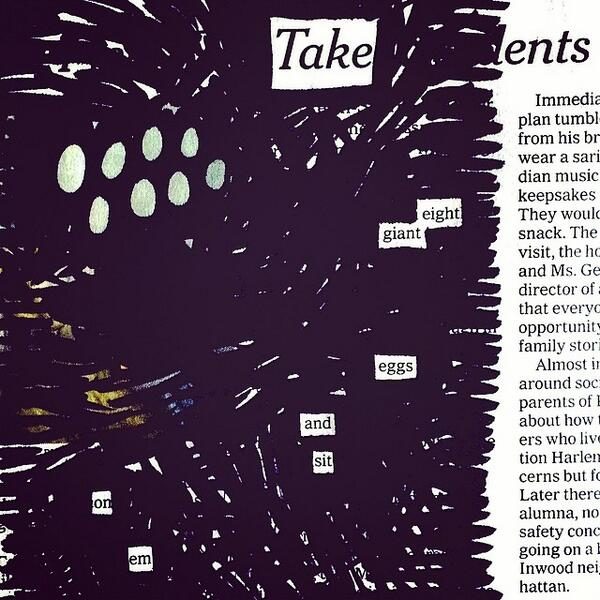
In John Stilgoe’s introduction to Thoreau’s journal, he points out that “Winter prompted him to ponder journalizing.” There’s a particularly lovely entry from January 22, 1852 — exactly 166 years ago, when Thoreau was 34, the age I am now — in which he tries to lay out what he’s doing with his journal, how he’s trying to make “wholes of parts.”
(Lawrence Weiner: “BITS & PIECES PUT TOGETHER TO PRESENT A SEMBLANCE OF A WHOLE.” Mark Strand: “We all have reasons / for moving. / I move / to keep things whole.”)
Thoreau says writing is a “distinct profession to rescue from oblivion and to fix the sentiments and thoughts which visit all men more or less generally.” In other words, his thoughts aren’t necessarily special, but writing them down is.
Each thought that is welcomed and recorded is a nest egg, by the side of which more will be laid. Thoughts accidentally thrown together become a frame in which more may be developed and exhibited… Having by chance recorded a few disconnected thoughts and brought them into juxtaposition, they suggest a whole new field in which it was possible to labor and to think. Thought begat thought.
Today when you say “nest egg” many think of money saved and put away, but a literal “nest egg” is a real or fake egg that you put in a nest to encourage a bird or a hen to lay more eggs there. So what Thoreau is saying is that by simply writing down a thought, you encourage more thoughts to come. When you have enough thoughts pushed together in the same space — a collage of thoughts, juxtaposed — they often lead to something totally new.
This is the magic of writing.
